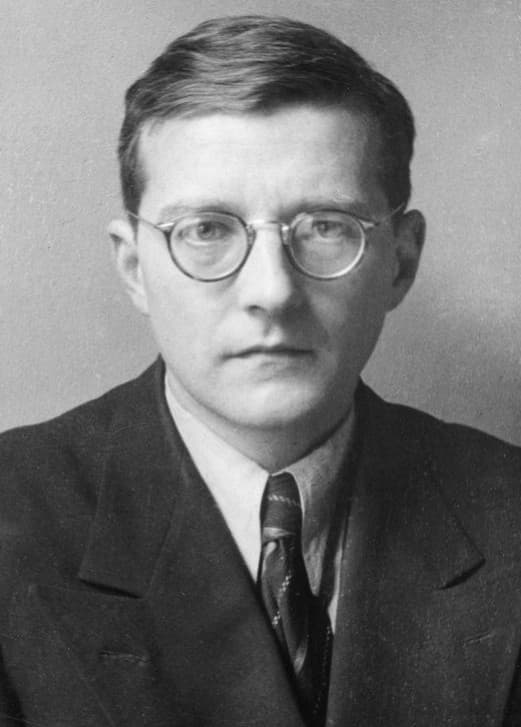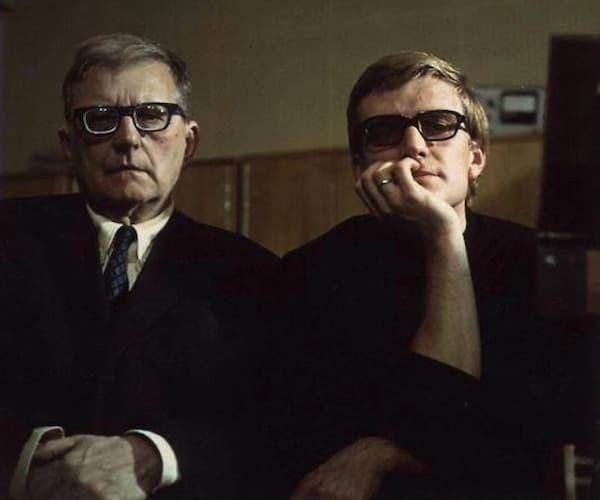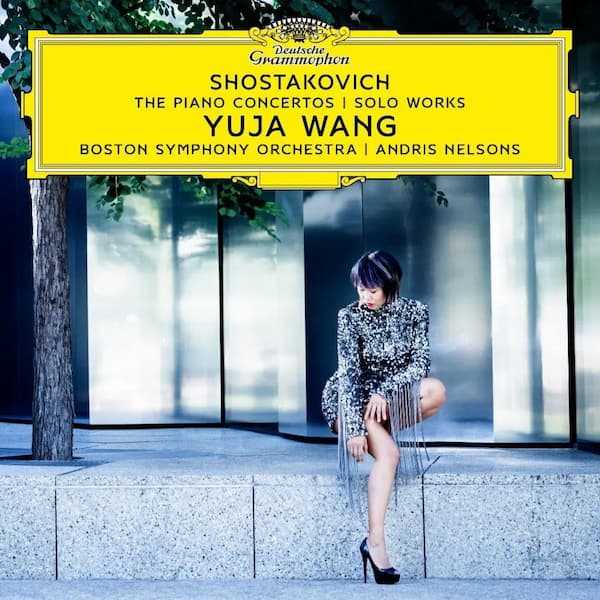In a new Deutsche Grammophon recording, pianist Yuja Wang presents the two piano concertos of Dmitri Shostakovich (1906–1975) along with selections from his Preludes for piano. The concerts are with the Boston Symphony Orchestra under Andris Nelsons.

Dmitry Shostakovich, 1942 (Red Star newspaper, No. 86 (5150) from 12 April 1942)
When you consider Shostakovich’s piano works, you must start with the fact that he intended to be a concert pianist, as were so many of his compatriots, such as Alexander Scriabin, Sergei Rachmaninoff, and Sergei Prokofiev. His professional career as a pianist stopped in 1927 after an unsuccessful outcome in the 1st Chopin Competition in Warsaw, where he only received an Honourable Mention.
Although he withdrew from the career, he did continue to play for the next seven decades and made recordings of his works, including the two piano concertos. In addition to writing two piano sonatas, incidental pieces, he also wrote a set of 24 piano preludes and a set of 24 preludes and fugues, in keeping with the Bach tradition.
The two piano concertos were composed 24 years apart (1933 and 1957) and are very different in their intents. The first piano concerto is actually the Concerto in C minor for Piano, Trumpet, and String Orchestra, Op. 35, making it a double concerto. Shostakovich said his original idea was for a trumpet concerto with added piano; eventually it became a piano concerto with added trumpet.
Concerto No. 1 is full of quotations and references, sometimes even to the point of parody. From the beginning we have a reference to Beethoven’s Appassionata Sonata (Piano Sonata No. 23, Op. 57), a piece from Beethoven’s Rage Over a Lost Penny (Op. 29) and from Haydn’s D major Piano Sonata (No. 50, Hob. XVI: 37), among other musical citations. Other quotes come from Shostakovich himself, with music from his own Hamlet, Op. 32a, and from a revue, Hypothetically Murdered, Op. 31. The trumpet also has a quotation from an English nursery rhyme known as Poor Mary or Poor Jenny.
The overall feel of the first piano concerto is a mix of lightness and humour – the original orchestra was reduced to the two soloists and the string section. No winds, no brass, and no percussion. Since Shostakovich was the original soloist for the premiere, much of the writing in the work is keyed to his strengths: ‘brilliance and lightness of touch, dry humour alternating with a treacly almost jazzy sweetness, occasional moments of virtuosic strength, and the ability to switch in an instant from one dramatic character to another’. Some of that versatility came from the composer spending the 1920s as a pianist for silent movies.
The world premiere was 15 October 1933 at the Leningrad Philharmonic Bolshoi Hall, Leningrad, with Dmitri Shostakovich as piano soloist, Alexander Schmidt as trumpet soloist, performing with the Leningrad Philharmonic Orchestra conducted by Fritz Stiedry. The work was ecstatically received and played a large part in reviving Shostakovich’s performing career.
Dmitri Shostakovich: Piano Concerto No. 1 in C Minor, Op. 35 – IV. Allegro con brio
Piano Concerto No. 2 in F major, Op. 102 was written as a 19th birthday present for his son Maxim (b. 1938), who was still a student at the time. Since this was intended for young pianists, the technical demands of the work are scaled back from those of the first piano concerto. The first movement is ‘light and accessible’ and in a pure neo-classical idiom. The second movement opens with a melody that could be from film music – sentimental, but with a real heart. The final movement opens with a humorous chromatic fanfare that unearths us from the second movement’s sometimes saccharine romanticism. There are driving rhythms and an athletic second theme. The third theme is based on ‘a comically flashy set of finger-strengthening scales’ that would be familiar to all piano students.
Dmitri Shostakovich: Piano Concerto No. 2 in F major, Op. 102 – III. Allegro
The world premiere was on 10 May 1957 at the Conservatory Bolshoi Hall, Moscow, with Maxim Shostakovich, piano, and the USSR Symphony Orchestra led by Nikolai Anosov, in Maxim’s graduation concert. It’s score for full winds, horns and no other brass, timpani, snare drum, and strings.

Dmitry and Maxim Shostakovich
The 5 of the 6 Preludes that conclude the recording are from Shostakovich’s 24 Preludes and Fugues, Op. 87. Shostakovich started writing these, inspired by a 1950 trip to East Germany to celebrate 200 years since Bach’s death. Using Bach’s Well-Tempered Clavier as his model, Shostakovich combined Bach’s model with mid-20th-century harmonics to create works such as Prelude and Fugue No. 2, which opens with a perpetual motion Prelude followed by a 3-voice Fugue that is a combination of strict form and idiosyncratic motion.
Prelude and Fugue No. 15 open with a waltz that could have been developed from a toy musical box’s theme but conclude with a Fugue that is not only densely chromatic but also atonal and with elements of 12-tone composition.
The sole example from his earlier set of Preludes, op. 34 is a true test of the pianist: the right hand is involved in sixteenth-note scales while the bass interjects with its own thoughts against the running notes. It’s short but very involved and a true virtuosic showpiece.
Shostakovich’s set of Preludes and Fugues, Op. 87, were not without controversy. He wrote them while he was still quite constrained by the actions of the Soviet government. His works had been banned since 1948, and his public output consisted of film music and official works. His private output, however, intended for the desk drawer, included these piano works. When Shostakovich played the Preludes and Fugues for the Union of Soviet Composers, No. 15, with its atonal elements, came for the sharpest remarks about its ‘formalism’ and ‘decadence’, two elements that Stalin was seeking to drive from true Russian music.

Yuja Wang, 2021

Andris Nelsons
Yuja Wang’s performance is everything you’d want in a Shostakovich recording: sharp, rhythmically precise, and with full command of all the different musical styles required by the composer. The minimalist orchestra behind the first concerto pushes the pianist and trumpeter forward in sound, with the contributions by the lower strings rounding out the sound. All the works on the recording, written by a virtuoso pianist himself, drive the technical demands to the maximum and Wang addresses them with ease.

Shostakovich: The Piano Concertos and Solo Works
Yuja Wang, Boston Symphony Orchestra, Andris Nelsons, cond.
Deutsche Grammophon 00028948669561
Release Date: 2 May 2025
For more of the best in classical music, sign up for our E-Newsletter

